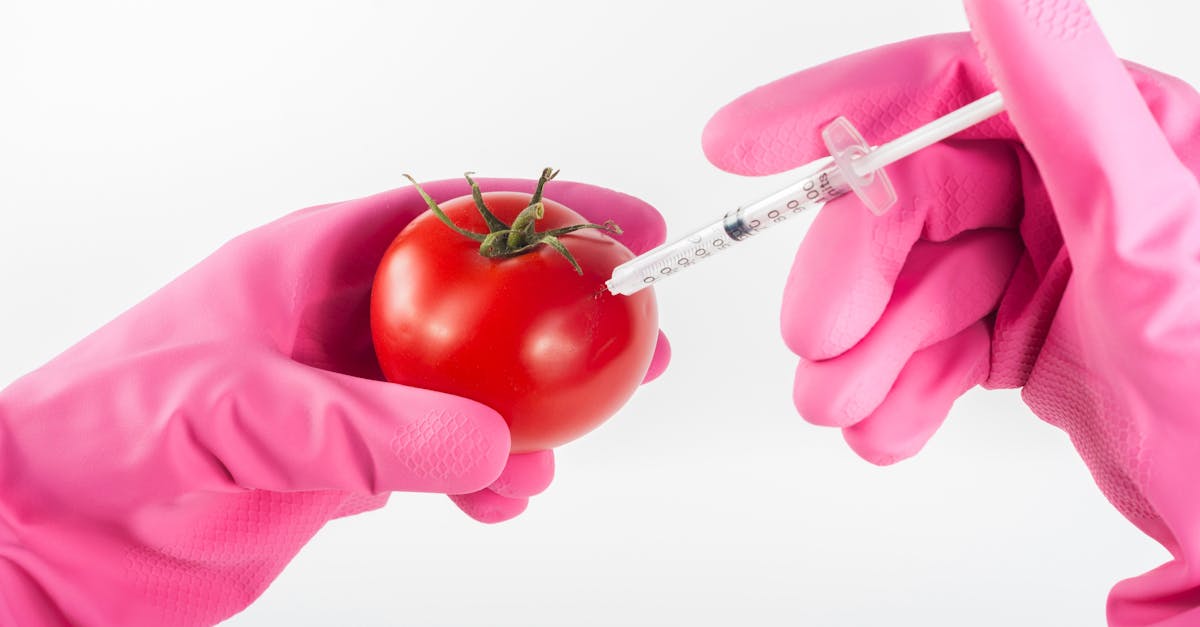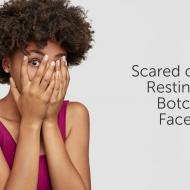Botox has endured a peculiar history of stumbling its way through the realm of medicine and cosmetics...

It’s destiny and identity have splintered and forked seemingly countless times since its original inception. What began as an exciting new approach to treating those suffering from squint, or cross-eyed disorder, has now expanded into a kind of one-size-fits-all miracle cure. This muscle-freezing neurotoxin is currently being used to treat everything from depression to migraines to excessive sweating. And its ever-growing list of uses is only getting longer.
As with most medical treatments, Botox’s wrinkle eliminating potential was originally discovered by accident. Back in the early 70’s, Dr. Alan B. Scott ingeniously realized that you could use the bacterium known as Clostridium botulinum to help alleviate cross-eyed disorder. As he began injecting the ocular muscles of his patients, Scott slowly noticed the remarkable effects this drug had on improving the look of facial wrinkles and fine lines. This was the initial baby step toward off-label usage that would eventually lead to the current miracle-cure status that Botox enjoys.
When ingested in large quantities, the particular neurotoxin derived from Clostridium botulinum can cause paralysis and death. However, when microscopic doses are precisely injected into specific target areas, the neurotoxin delicately halts the surrounding muscle activity. As the muscles that cause wrinkles are essentially frozen, patients are temporarily relieved of their crow’s feet and facial furrows. This also acts as a preventative tactic by placing a hold on any further deepening of these wrinkles.
Allergan purchased this medical wonder from Scott in 1991 and renamed the product Botox. At the time, the drug had only just recently received FDA approval for its use in treating squint. Botox was in its infantile stage, but the possibilities were immediately recognizable. Despite knowing of its alternative potentiality and opting for a name change, Allergan had seemingly no intention of using Botox for anything other than its original purpose. Back then, Allergan mainly manufactured and sold eye-care products like contact solutions and eye-drops. Botox was seen as just another product in their previously established ocular industry line.
The fact that Botox received FDA approval is of particular importance as that badge offers the ultimate go-ahead for experimentation in the medical industry. In the U.S., any licensed physician is able to prescribe an FDA approved drug for whatever they see fit. Many of Botox’s current uses are not officially approved by the FDA, but as long as they allow it for one condition, doctors are able to run with it in practically any direction. This type of experimentation is known as off-label usage and is one of the primary cornerstones of progressive medicine.
If you’re the manufacturer of an FDA approved drug like Botox, this sort of experimentation can be a tremendous boon to your corporate interests. And that’s why by 1998, Allergan made the decision to start heavily pushing for Botox’s use as a wrinkle-reliever. Four years later the FDA approved Botox’s wrinkle alleviation (specifically for frown lines) and the product officially entered the realm of cosmetic enhancements. Needless to say, Allergan's profits from Botox took flight and eventually reached a staggering $2.45 billion by 2015. Of course, this revenue stream was further heightened by the dozens of other off-label uses for Botox that were subsequently discovered along the way.
What began as a purely medical solution for cross-eyed patients slowly transformed into the cosmetic industry mammoth that most people associate Botox with today. In a bizarre series of twists and turns, this supposed miracle drug has again expanded outside of the realm of the purely aesthetic and into world of traditional western medicine. Nowadays, the uses for Botox vary from the areas of cosmetic enhancements to certain potentially life saving endeavors. As more and more doctors discover happy accidents and Allergan continues to push the bounds of its Botox testing, this wrinkle-reliever will likely find its way into every corner of the medical industry.
Not FDA Approved:
Botox for Premature Ejaculation
Yes, there are actually currently trials underway with the goal of delaying ejaculation through Botox injections in the penis. By relaxing the muscles within the penis, doctors hope to normalize its functionality during sex. Essentially, if the cause of a symptom or disorder can be traced by to improper or imbalanced muscle usage, then Botox just might be the perfect solution.
Botox for Scrotum Wrinkles (Scrotox)
Again, this not a joke. Men have taken to a new fad comically known as Scrotox as a means for reducing genital wrinkles. Sometimes referred to as “ball-ironing”, botox for the scrotum is meant to smooth out wrinkles and has the added benefit of temporarily increasing testicle size. While the wrinkle relieving effects of this treatment are similar to those seen on the face, the long-term results are still somewhat unclear. Nonetheless, a fair amount of men are lining up for this alternative botox use.
Botox for Chronic Depression
Treating depression with Botox might seem like too much of a stretch, but the logic is actually quite sound and certain studies are demonstrating its potential. The idea is that your facial expressions can actually influence your mood, rather than just the other way around. After receiving facial Botox injections, the patient is less able to make depressed expressions. This approach was shown to help more than half of the participants in a small study from 2014. While that might not seem like a great success, those numbers aren’t far off from other studies involving depression specific drugs. It’s certainly not the holy grail for victims of depression, but it definitely warrants further exploration.
Botox for Irregular Heartbeat
It’s often difficult for the heart to heal properly once it has been surgically worked on. After undergoing open-heart surgery, patients frequently experience irregular heart beats. Considering the heart is a muscle, it makes sense that Botox could be used to relax and regulate its beating. Of course, this type of usage requires a high degree of careful testing and likely won’t be FDA approved for some time. Still, it highlights Botox’s fairly recent identity expansion from a simple cosmetic enhancement tool to a potentially life-saving drug.
Botox for Poor Circulation
Poor circulation is the most common cause for those who live with chronically cold hands. Doctors have found that injecting Botox into the hand muscles can loosen the tension that’s causing the blood vessel constriction and foster a more regular blood flow. This particular off-label use for Botox will likely be FDA approved in the near future.
Botox for Cleft Lip Scar Prevention
A cleft palate and cleft lip are a genetic defects that thousands of children are born with each year. While there are surgical operations that essentially correct these issues, there hasn’t been much that doctors could do about the leftover scarring until now. Botox can be injected into the lip or palate of an infant after their mouths are surgically corrected in an attempt to limit the usage of the muscles that would normally heighten scarring. This off-label usage is a unique instance of Botox solving both cosmetic and medical issues simultaneously.
Botox for Sexual Discomfort
Many women experience discomfort or pain during sexual intercourse due to undesired muscle contractions and spasms in their vagina and pelvic region. This is yet another example of unwanted or irregular muscle activity that can be temporarily relieved through Botox injections. Like most of its uses for treating various muscle spasms, it likely won’t take long for Botox for sexual discomfort to be FDA approved.
FDA Approved:
Botox for Migraines
Botox as a solution for migraines was discovered as another happy accident. Some doctors that used Botox to treat wrinkles began receiving feedback from patients that claimed to find temporary relief from their chronic headaches. While many doctors argue that this is simply an example of the placebo effect in full force, others hold firm that true migraine relief is occurring. Regardless, Allergan managed to get the FDA approval for Botox for migraines back in 2010. Since then thousands of patients have happily jumped on the bandwagon.
Botox for Sweating
In another beneficial fluke, doctors found that their patients were sweating much less after receiving Botox for facial spasms. Allergan quickly jumped on this phenomenon and got the FDA to approve Botox for excessive sweating in 2004. This treatment option has now been modified to help alleviate underarm, hand, and feet sweating.
Botox for Incontinence
Urinary incontinence is an extremely common and often embarrassing issue that an estimated 33 million men and women are forced to endure in the U.S. alone. While the causes of incontinence are often varied, it can usually be traced back to an overactive bladder or undesired muscle activity in the urinary tract. After a series of successful tests in 2012, Allergan officially received the FDA approval on Botox for urinary incontinence. Patients were found to experience a decrease in unwanted leakage from roughly six times a day to only once.
Botox for Squint
As we mentioned above, Botox’s first official FDA approval was for its use in treating squint or cross-eyed disorder back in 1989. By relaxing a portion of the ocular muscle, Botox helped patients regain full control of both eyes and drastically improved their overall vision and aesthetic appearance. It wasn’t until nearly 10 years later that Botox started to shift gears toward the realm of cosmetic enhancements.
Botox for Muscle Spasms (specifically in relation to MS, Facial Twitching, and Neck Spasms
Certain neurological conditions such as Multiple Sclerosis (MS) cause severe spastic activity in muscles throughout the body. As with other types of unwanted muscle activity, Botox can be used to stop the contractions and twitching that cause neck spasms and neck pain, facial twitching, and other unfortunate bodily spasms. While each specific type of Botox use for muscle spasms aren’t necessarily FDA approved, Allergan did manage to get the official FDA go-ahead for cervical dystonia (which causes severe neck spasms and pain) back in 2000. It’s only a matter of time before the treatments of most other types of muscle spasms also get approved.
Botox for Masseter Reduction
Many women, as well as men, experience issues with the size of their masseter muscle. The masseter wraps underneath the jaw and can have a huge impact on how masculine or sharp a jaw line appears. By injecting a diluted form of Botox into the masseter muscle, the overall size can be temporarily reduced. This allows the patient’s jaw line to take on a rounder and more feminine look. A very precise dilution and injection of Botox is required to ensure the appropriate size change is achieved for this procedure.

